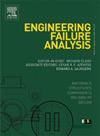使用纤维增强聚合物(FRP)对历史悠久的Şirvani清真寺进行抗震改造:案例研究
IF 4.4
2区 工程技术
Q1 ENGINEERING, MECHANICAL
引用次数: 0
摘要
本研究探讨了使用纤维增强聚合物(FRP)对历史悠久的砌体Şirvani清真寺进行抗震加固。这座清真寺长22米,宽19米,高6米,有一个35米高的尖塔,在2023年2月26日的土耳其地震中遭到严重破坏。清真寺的拱门、墙壁和圆顶上出现了裂缝,迫切需要对结构进行加固,尤其是尖塔,它最终倒塌了。为了评估清真寺的地震行为,使用结构极限荷载(ELS)软件进行了非线性时程分析。最初的模拟验证了清真寺的脆弱性,成功地再现了观察到的破坏模式和尖塔在强烈的地面运动下的倒塌。在此之后,在相同的软件环境中模拟了一个包含FRP的改造解决方案。分析结果表明,玻璃钢加固显著提高了尖塔的结构回弹性。FRP优越的抗拉性能有效地减少了地震荷载作用下的位移和应力集中,防止了塔体的倒塌,保证了塔体的结构完整性。这种改造方法不仅解决了现有的损坏,而且提高了清真寺的长期耐久性和抗震性能。通过将先进的动力分析技术与现代加固材料相结合,本研究为历史建筑的保护提供了一个强有力的框架。Şirvani清真寺的尖塔案例研究强调了当代改造方法在保护文化遗产的同时提高抗震性能的潜力。本文章由计算机程序翻译,如有差异,请以英文原文为准。
Seismic retrofitting of the historic Şirvani Mosque using fiber-reinforced polymer (FRP): A case study
This study investigates the seismic retrofitting of the historic masonry Şirvani Mosque using fiber-reinforced polymer (FRP). The mosque measures 22 m by 19 m with a height of 6 m and features a 35-meter-tall minaret that suffered severe damage during the February 26, 2023, earthquake in Turkey. Cracks developed in the arches, walls, and dome of the mosque, underscoring the urgent need for structural strengthening, particularly for the minaret, which ultimately collapsed.
To evaluate the mosque’s seismic behaviour, nonlinear time history analyses were carried out using the Extreme Loading for Structures (ELS) software. Initial simulations validated the mosque’s vulnerability, successfully reproducing the observed damage patterns and collapse of the minaret under strong ground motion. Following this, a retrofitting solution incorporating FRP was modelled within the same software environment. The analysis results showed that FRP retrofitting significantly improved the structural resilience of the minaret. The superior tensile properties of FRP effectively reduced displacements and stress concentrations during seismic loading, preventing collapse and ensuring the structural integrity of the minaret.
This retrofitting approach not only addresses existing damage but also enhances the long-term durability and seismic performance of the mosque. By combining advanced dynamic analysis techniques with modern strengthening materials, this study presents a robust framework for the preservation of historic structures. The Şirvani Mosque’s minaret case study highlights the potential of contemporary retrofitting methods to safeguard cultural heritage while improving seismic performance.
求助全文
通过发布文献求助,成功后即可免费获取论文全文。
去求助
来源期刊

Engineering Failure Analysis
工程技术-材料科学:表征与测试
CiteScore
7.70
自引率
20.00%
发文量
956
审稿时长
47 days
期刊介绍:
Engineering Failure Analysis publishes research papers describing the analysis of engineering failures and related studies.
Papers relating to the structure, properties and behaviour of engineering materials are encouraged, particularly those which also involve the detailed application of materials parameters to problems in engineering structures, components and design. In addition to the area of materials engineering, the interacting fields of mechanical, manufacturing, aeronautical, civil, chemical, corrosion and design engineering are considered relevant. Activity should be directed at analysing engineering failures and carrying out research to help reduce the incidences of failures and to extend the operating horizons of engineering materials.
Emphasis is placed on the mechanical properties of materials and their behaviour when influenced by structure, process and environment. Metallic, polymeric, ceramic and natural materials are all included and the application of these materials to real engineering situations should be emphasised. The use of a case-study based approach is also encouraged.
Engineering Failure Analysis provides essential reference material and critical feedback into the design process thereby contributing to the prevention of engineering failures in the future. All submissions will be subject to peer review from leading experts in the field.
 求助内容:
求助内容: 应助结果提醒方式:
应助结果提醒方式:


